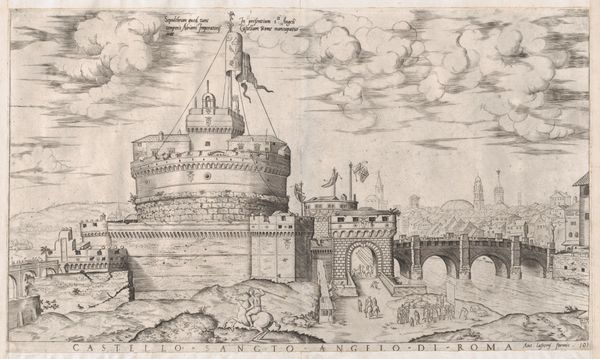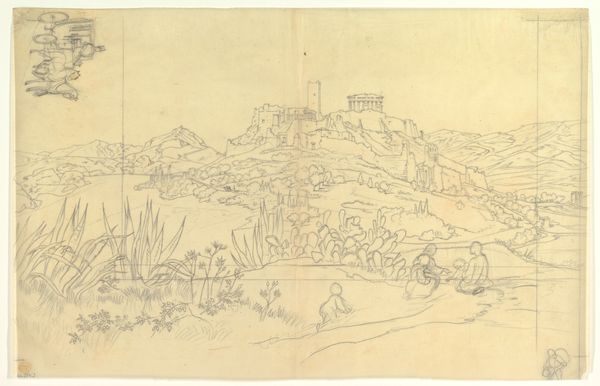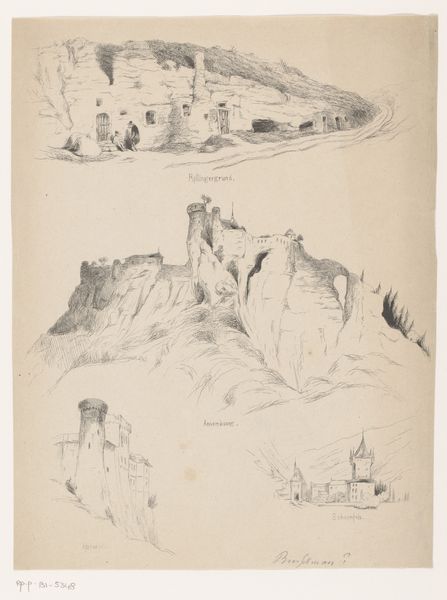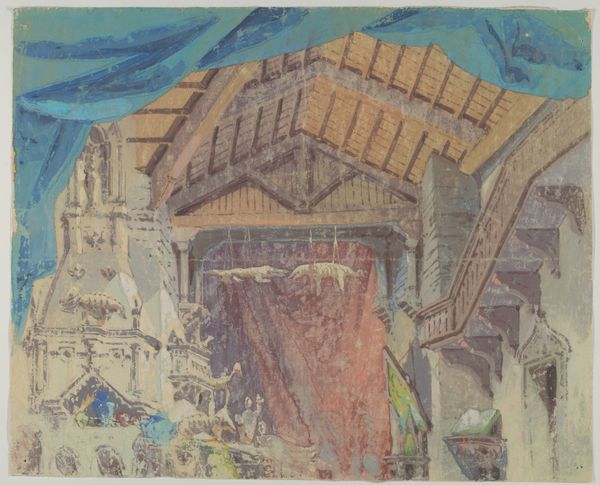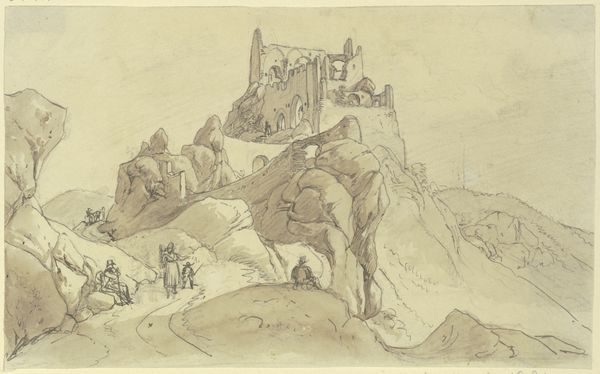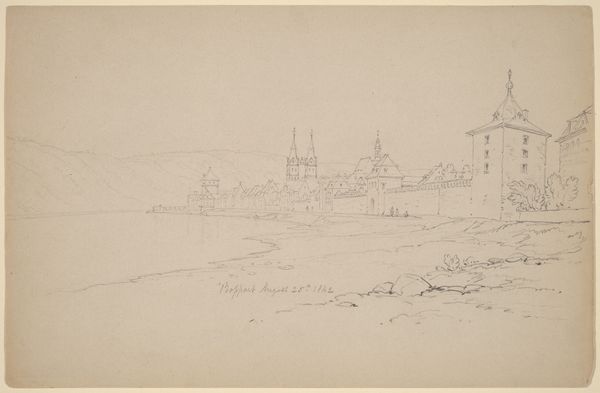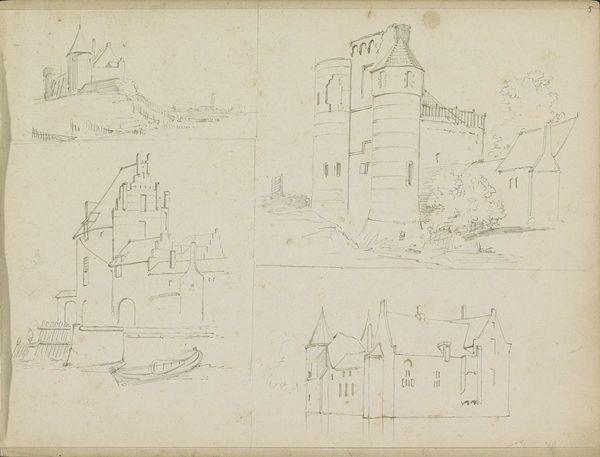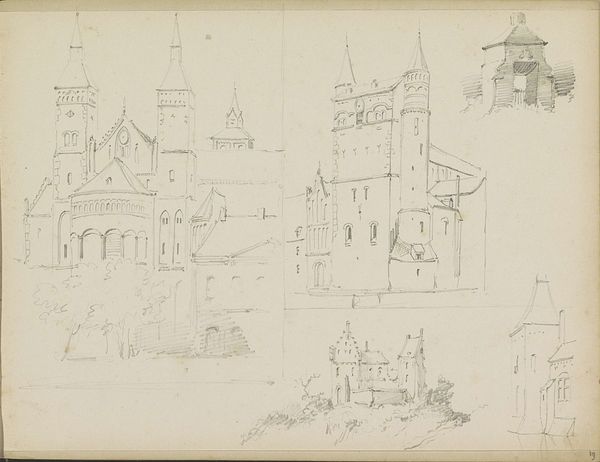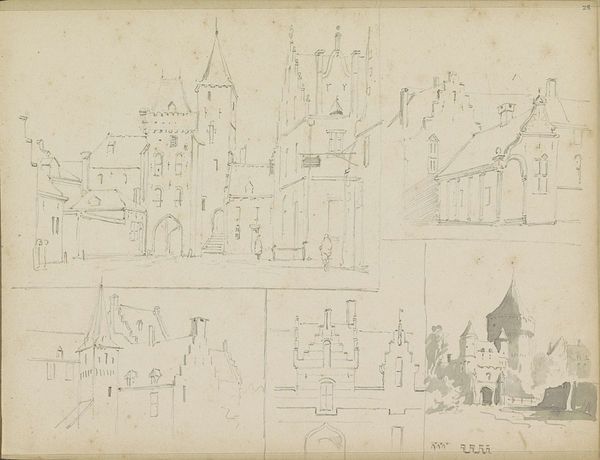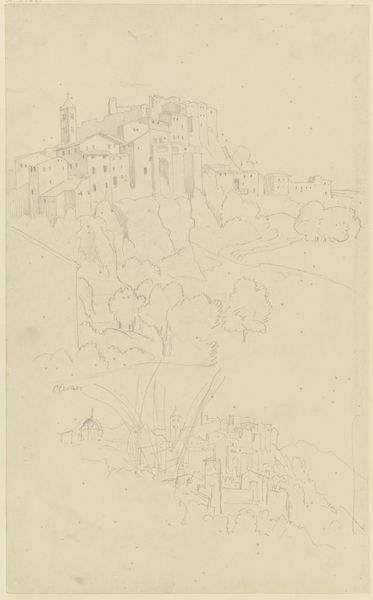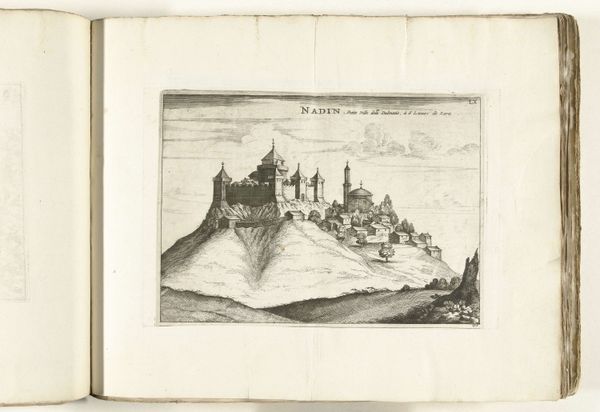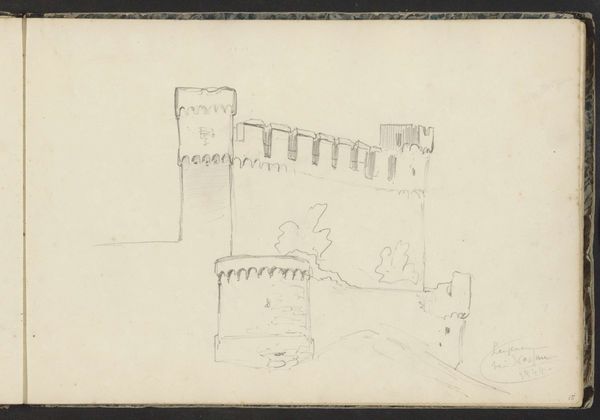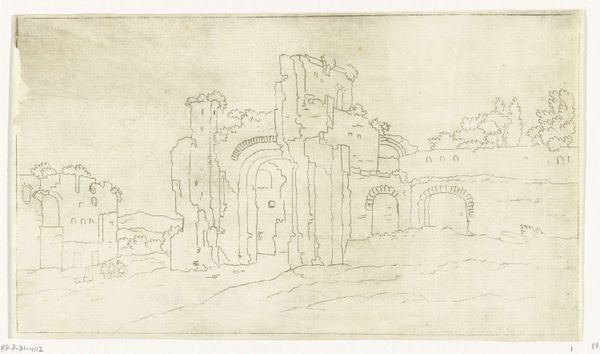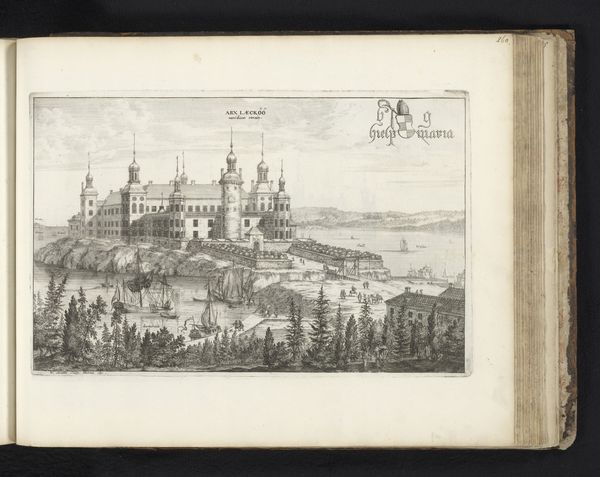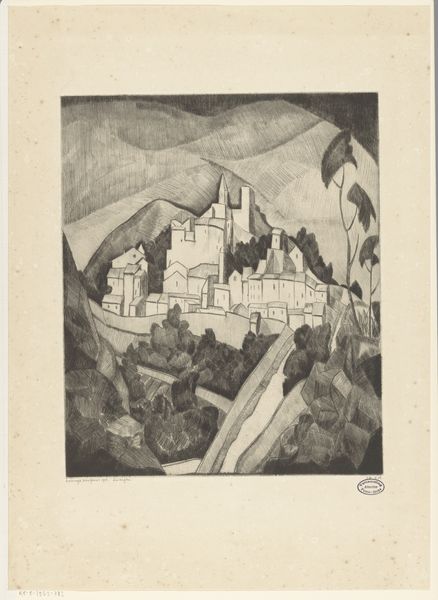
drawing, watercolor
#
drawing
#
narrative-art
#
asian-art
#
sketch book
#
hand drawn type
#
landscape
#
personal sketchbook
#
watercolor
#
ink drawing experimentation
#
coloured pencil
#
sketchbook drawing
#
watercolour bleed
#
watercolour illustration
#
storyboard and sketchbook work
#
sketchbook art
Copyright: Public domain
Editor: Here we have Ivan Bilibin's 1930 sketch, created with watercolor, for the opera "Prince Igor" by Alexander Borodin. The architectural forms almost appear to be built up using patterned fabrics rather than solid materials. How would you interpret this piece? Curator: It's fascinating to consider the context in which Bilibin created this work. As a materialist, I immediately consider the conditions of its production and consumption. He's referencing Asian art. But the key point for me is the emphasis on stage design: it’s explicitly made to be consumed. It directs our eyes toward how labor, particularly textile work, creates and defines "high culture." Editor: So you’re seeing a connection between the visual components and a larger commentary on labor? Curator: Precisely. The bright colours and intricate patterns weren’t simply aesthetic choices. How do these dwellings protect, provide warmth or shelter from external aggression? Where is Igor’s location on the Eurasian steps relative to Borodin's residence? They signal an embrace, even a romanticizing, of folk art traditions elevated within the sphere of operatic performance for wealthy and noble elites. Editor: It almost seems as though Bilibin blurs lines between functional materials and theatrical representation. Curator: Exactly! The very act of sketching, choosing watercolor, implies decisions that shape the viewer's experience and understanding of the means by which a "national identity" is manufactured through culture. He questions traditional distinctions between art and craft. Editor: That makes me rethink what I initially saw as a charming illustration and consider it as a deeper investigation. Curator: And that is the real power of art - encouraging us to consider materials beyond just what is depicted on the surface.
Comments
No comments
Be the first to comment and join the conversation on the ultimate creative platform.
